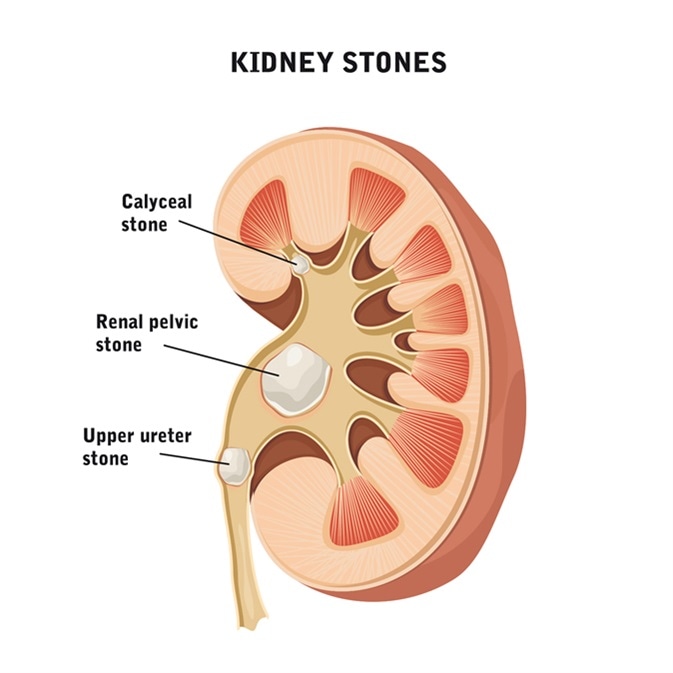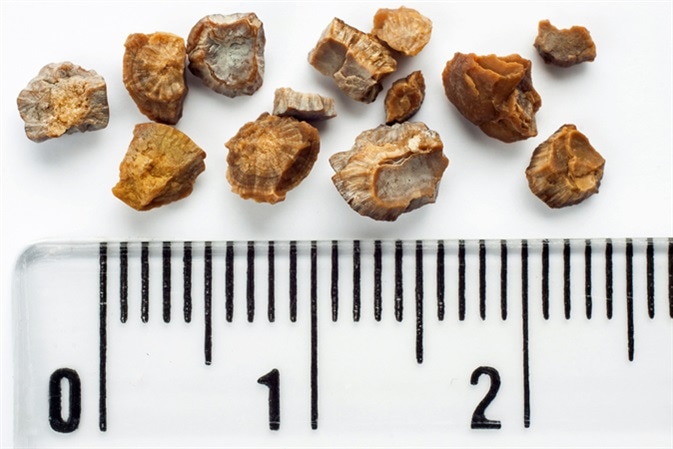Site Under Development, Content Population and SEO, Soft Launch 1st January 2020
Urine is composed of numerous dissolved salts and minerals. Higher levels of these salts and minerals in the urine may result in the formation of stones in the kidney (kidney stones)—scientifically termed as urolithiasis or nephrolithiasis.
While some stones may stay inside the kidney and do no harm, others may travel from the kidney through the ureter and reach the bladder. In the process, the stone may get lodged in the ureter (ureteral stone), causing pain and blocking the flow of urine from kidney.
When the stone is small, it may pass in urine. Bigger stones can be removed with specific treatment methods. If left untreated and the stones do not pass in the urine spontaneously, they can cause severe pain, hematuria, and urinary tract and kidney infections, and even affect kidney function.

At present, the incidence of kidney stone formation is high and seems to be a common condition. In the United States, 6% of women and 11% of men are reported to have kidney stones at least once in their lifetime.
The stones have the ability to grow and may be of different shape, color, and size. They could be sharp or smooth and are often brown or yellow. In general, there are four types of stones:

About 80% of kidney stones diagnosed are calcium stones. When the urine contains higher levels of calcium, it may increase the risk of calcium stone formation. However, when the calcium levels in the urine are normal, there is still a possibility of calcium stone formation due to other reasons. For example, medical conditions such as hyperparathyroidism can increase calcium levels; hyperoxaluria can increase oxalate levels and could be a cause of calcium stone formation.
Calcium stones can be made of either calcium phosphate or calcium oxalate. However, oxalate types are most common. Calcium oxalate crystals are formed when oxalic acid combines with higher levels of calcium present in the urine. Oxalate stones are relatively small—7 mm or even less.
Calcium phosphate crystals are formed when phosphoric acid combines with higher levels of calcium in the urine. Though not common, it can be seen in individuals whose urine is alkaline. The size of the phosphate stones is larger than that of oxalate stones. These stones are further classified as:
Medical conditions such as gout, diabetes, chronic diarrhea, and diet pattern involving intake of high amounts of animal protein and low amounts of vegetable and fruits contribute to acidic urine. When the crystals of uric acid do not liquefy well in acidic urine, then uric acid stones are formed. About 5–10% of stones diagnosed fall under this category.
Obese individuals have a higher risk of uric acid stone formation. Disorders that involve hyperuricosuria are associated with high uric acid levels in the urine, and may increase the risk of uric acid stone formation.
Though struvite stones are uncommon, they constitute about 10% of the kidney stones that are diagnosed. Struvite stones can be associated with chronic urinary tract infections (UTIs) and are also known as infection stones. Men are more prone to struvite stone formation; however, these stones tend to form more often in women who have a UTI.
Some bacteria have the capability to make the urine more alkaline and less acidic. When the urine is more alkaline, struvite (magnesium ammonium phosphate) stones are formed. Therefore, patients who have chronic UTIs and use tubes in the urinary bladder and kidneys, and individuals with neurologic disorders such as spina bifida, paralysis, and multiple sclerosis (as bladder emptying process can be poor) form the risk population.
Struvite stones are often bigger in size, have branches and grow very quickly. Large struvite stones are termed as staghorn calculi. As they can create complications, these bigger stones need to be treated using antibiotics or with the help of any other stone removal methods.
When the urine is composed of higher levels of cystine, cystine stones may be formed. These are rare forms of stones and the incidence of this type is less than 1%.
Often these stones begin to form from the infancy stage. Individuals who inherit medical conditions such as cystinuria are at greater risk, as in their case, the cystine is not reabsorbed (from the urine) by the kidney. This results in higher levels of cystine in the urine, and possibly cystine stone formation.
Individuals who do not drink sufficient fluids, have a family history of stone formation, and have medical conditions such as block in the urinary tract, chronic bowel inflammation, cystic kidney diseases, gastrointestinal tract surgeries, digestive problems, and renal tubular acidosis are at a higher risk.
Certain medications such as water pills, anti-seizure pills, protease inhibitors, and antacids that are calcium bases when consumed for a longer period may result in stone formation. If kidney stones are formed once, chances are that they can form again.